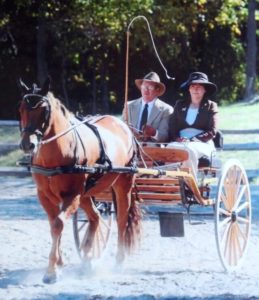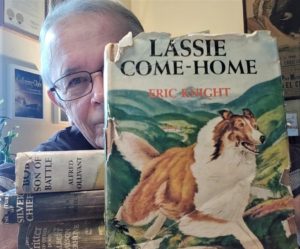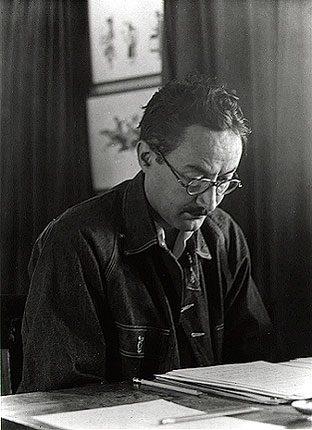Jean Toomer, Conestoga horses and ‘Lassie Come Home’.
Laure Duval recently shared a personal memoir after reading my column about literary giant Jean Toomer who lived in Doylestown Township for more than 40 years (published Aug. 17). Laure was a frequent visitor to the Toomer farm as a child.
“You have again brought back a flood of memories.” she began. “I grew up going to Buckingham Friends Meeting, and was also at the Friends School in Lahaska with Toomer’s granddaughter Marion in my class. We lived ‘around the corner’ on Church School Road and was often at the Toomer home with Marion. They had a burro I liked a lot. I had no idea Jean Toomer was a writer, or that he was ‘Black’ although the term then was Negro, and there were not many people of color in Buckingham then. His wife Marjorie favored colorful broomstick skirts, peasant blouses, heavy turquoise jewelry and was very tan. Jean was tall, thin, slow moving, sort of coffee colored with big freckles, and mournful eyes. I vaguely assumed they were Mexican, whatever my child’s mind meant by that. He was grand fatherly and told us stories as we sat on his knees. I knew they had spent time in the Southwest. I knew that Jean was very active in the Meeting and wrote pamphlets for the Yearly Meeting in Philadelphia. It was not until I was in college taking an American literature course that I came upon and read “Cane” and learned of his Harlem Renaissance years.
“Still later I learned of their connections with Mabel Dodge Luhan, Georgia O’Keeffe and the artist and writer’s group in Santa Fe. He was quite the man there it seems. But to me he was just Marion’s kindly grandfather with sad eyes.”
Conestoga horse breed disappeared’
Deborah George of Milford Township commented on my history of the Conestoga wagon in Bucks County (published Aug. 31). “I was delighted to see your piece on Conestoga wagons. Did you know there once existed a breed of horse developed exclusively to pull them? Sadly, they’ve disappeared into the pages of history.”

I looked into the breed Deborah mentioned. The Pennsylvania Dutch who invented the wagons also bred horses to pull them in the early 1700s. The animals were powerful, tall and weighed about 1,500 pounds. By the early 1900s however, the wagons and the Conestoga Horse faded into history. One impact on American culture remains. The wagons never yielded to oncoming traffic. All other travelers had to veer off the road to their right to let the huge rigs pass. This is where the tradition of Americans driving on the right side of the road comes from.
‘Memories of a book and a dog’
I’m hoping that Carole Graffeo of Plumsteadville is out there somewhere. She wrote me several years ago after reading my column (published Aug. 29, 2014) about my faithful childhood pal Dana, a golden collie who followed me everywhere, and the novel “Lassie Come Home”, a treasure given me by my grandparents when I was 9. I noted in the column that author Eric Knight lived in Bucks County. In looking back at Carole’s note, I thought I’d share it:

“We didn’t have books at our house although we all read, my parents mostly newspapers and magazines and I borrowed from the town library. I read ‘Lassie Come Home’ over and over and when I got married and moved to Bucks County, I would read it to my children during summer visits to Virginia and later after my parents died the book moved to my house and I read it to my grandchildren.
“I was often alone as a child – my mother worked during the daytime and my father the night shift so he was sleeping during the day. A stray dog had puppies under the porch of our neighbor’s house when I was about 9. She was a beautiful red Irish setter but she didn’t survive. I brought one of the puppies home, a little black thing I called Smokey. My parents were not welcoming but didn’t have the heart to take it away. My mother especially didn’t want a dog around and refused to let him in the house even during bad weather. We were best friends for several years. Smokey would have followed me to school but it was not a good idea so I ran him back home when he tried. But he was always waiting there for me when the day was over.
“So I sat in the rocker on the front porch reading the Sunday paper including your column and was swept away by old memories of a book and a dog. Your story brought tears to my eyes and I spent a long time just sitting there thinking about what you had written and remembering.”
***
The impact of Conestoga wagons on American culture is found on the web at www.animal-world.com. Reader and freelance writer Deborah George recommends a visit to the Boyertown Museum of Historic Vehicles in Berks County. In addition to a preserved diner, carriages, antique automobiles and motorcycles, a beautiful Conestoga wagon is a treasure on the museum’s second floor factory where carriages once were made. Details at www.boyertownmuseum.org

